Description
Listen: 1.43 Minute Explanation
Do you desire a world…
… that you rule, instead of one that rules you?
… where you are powerful, instead of helpless?
… in which you have no adversaries, only allies?
Even though some teams feel more like a battleground than a collaborative work environment, every person deserves to experience the magic that occurs when teammates Do No Harm and Work As One ®.
With Right-Minded Teamwork’s 7 Mindfulness Training LessonsAchieving Right-Minded Teamwork involves adopting an attitude of mindfulness. These 7 Lessons teach how to do no harm and work as one. More, it is possible to rise above the battleground and enter the classroom, a place – in your mind and your team culture – where challenging circumstances are transformed into fantastic learning opportunities.
A Brief Overview of RMT’s 7 Mindfulness Lessons
These 7 lessons may be summed up in one sentence, emphasizing three words: Right-minded teammates always accept, forgive, and adjust their thinking and work behavior.
- I am not upset about this difficult situation for the reasonReason is a mythological character and symbolic guide who shows you how to think and behave in a Right-Minded way. As your Right-Minded teacher, Reason helps you differentiate and choose between Right-Minded and wrong-minded attitudes and behaviors. More I think. [This is TRUE. The book will explain.]
- I accept and own my part in this situation.
- It’s impossible that my thoughts about this situation are neutral.
- I forgive others and myself.
- I will transform the effects of this difficult team situation.
- I adjust my thinking and behavior.
- I see every difficult team situation as a learning opportunity.
By practicing RMT’s 7 Mindfulness Lessons, you become the ruler of your world. Instead of feeling tossed about by circumstances, you maintain your power of response. When conflict occurs, you avoid unnecessary EgoEgo is the negative, wrong-minded teacher who continually tells you how difficult the world is and how you must constantly fight to survive. More attacks and battles and instead seek moments of Reason. Your calm mindfulness guarantees you have no adversaries, only team allies.
What Are RMT and These 7 Lessons About?
Right-Minded Teamwork ® is a business-oriented, psychological approach to team building where acceptance, forgiveness, and adjustment are teammate characteristics, and 100% customer satisfactionCreating 100% customer satisfaction is a primary goal of Right-Minded Teamwork. More is the team’s result.
These three characteristics are achieved through mindfulness, the conscious ability to monitor our thoughts in the present. When we are mindful, we calmly acknowledge and accept our thoughts, feelings, and behaviors, as well as those of others, instead of mindlessly reacting.
RMT’s 7 Mindfulness Training Lessons teach you and your team how to shift your thinking and behavior so you easily accept, forgive, and adjust. With RMT’s help, you will soon find yourselves working together to successfully achieve team goals.
Everything You Need to Get Started with 7 Lessons Is Here!
This package contains these downloadable files:
- Ebook: PDF, 150 pages – 7 Mindfulness Training Lessons
- Ebook: ePUB, 150 pages – 7 Mindfulness Training Lessons
- PDF: 25 pages, 7 Mindfulness Training Lessons – Reusable Resources
- PDF: Printing Instructions – Cards & Poster
- PDF: Right-Minded Teamwork 7 Lessons 8×11 Inch Poster
- MS Word Document: 7 Mindfulness Training Lessons 3×4 Inch Cards – Front
- MS Word Document: 7 Mindfulness Training Lessons 3×4 Inch Cards – Back

***NOTE: This ebook package includes accompanying Reusable Resources specific to this book. Paperback purchases made through Amazon or Barnes & Noble do NOT include these Reusable Resources. If you have already made your paperback purchase, visit the Resources section of your book for a discount code, then return to rightmindedteamwork.com to invest in your accompanying Reusable Resources.
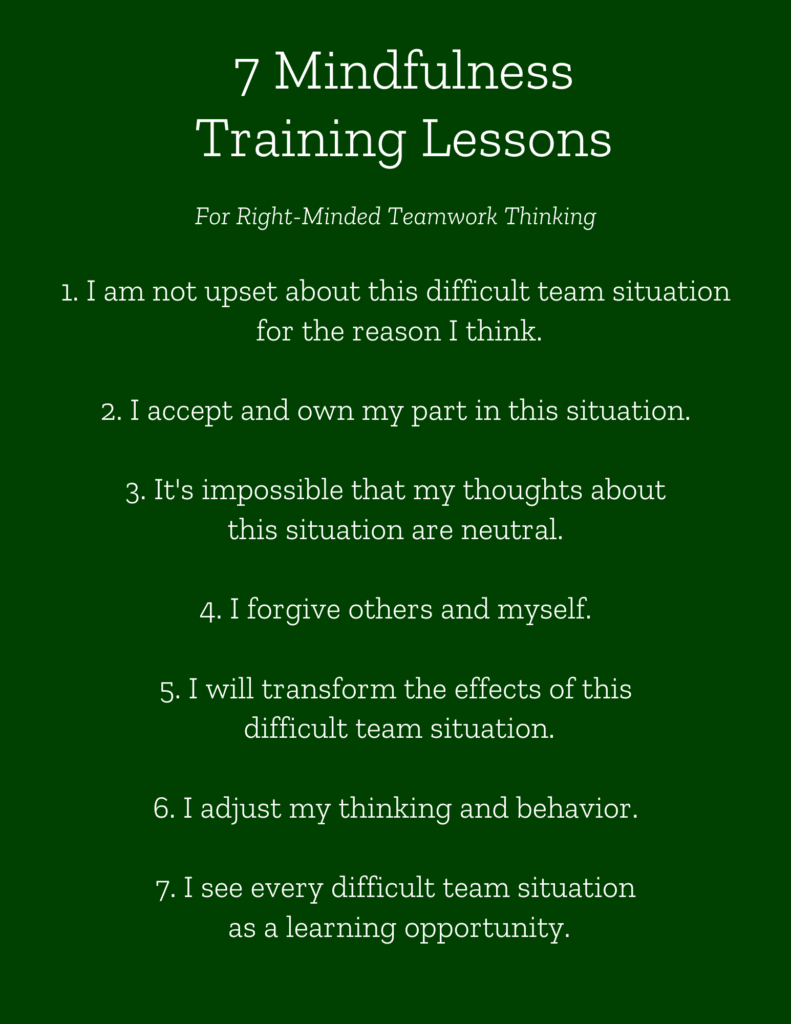
2 Options for Applying the 7 Lessons
There is no single right way to apply these 7 Mindfulness Lessons. But there are two possible scenarios that lend themselves well to team application: self-study and team study. Both are recommended.
Self-Study Approach
If you are pursuing self-study, you will learn how to use the 7 Lessons by considering a difficult team situation you likely know very well: that of the Constantly Complaining Teammate (CCT). Facing a Constantly Complaining Teammate on your team may be the reason you are seeking teamwork solutions.
Though a CCT’s complaints may look or sound different day to day, a similar message underpins their efforts. They insist, “My life can’t get better until you change.” They believe they are right, and everyone else is wrong, so therefore you must be the one to change.
Fortunately, the 7 Mindfulness Lessons can successfully address CCT challenges. Once you understand how to apply these 7 Lessons with a CCT, you will know how to do the same in all your difficult situations.
Team Study Approach
If you are opting for a team approach, in addition to this book, you will also want to consult the RMT book Right-Minded Teamwork in Any Team: The Ultimate Team-Building Method to Create a Team That Works as One. Here, you will discover a three-workshop implementation plan, the third of which focuses on Right-Minded Teammate development. This third team-building workshop is a wonderful time to explore the 7 Mindfulness Lessons and collectively decide how to apply them in your team.
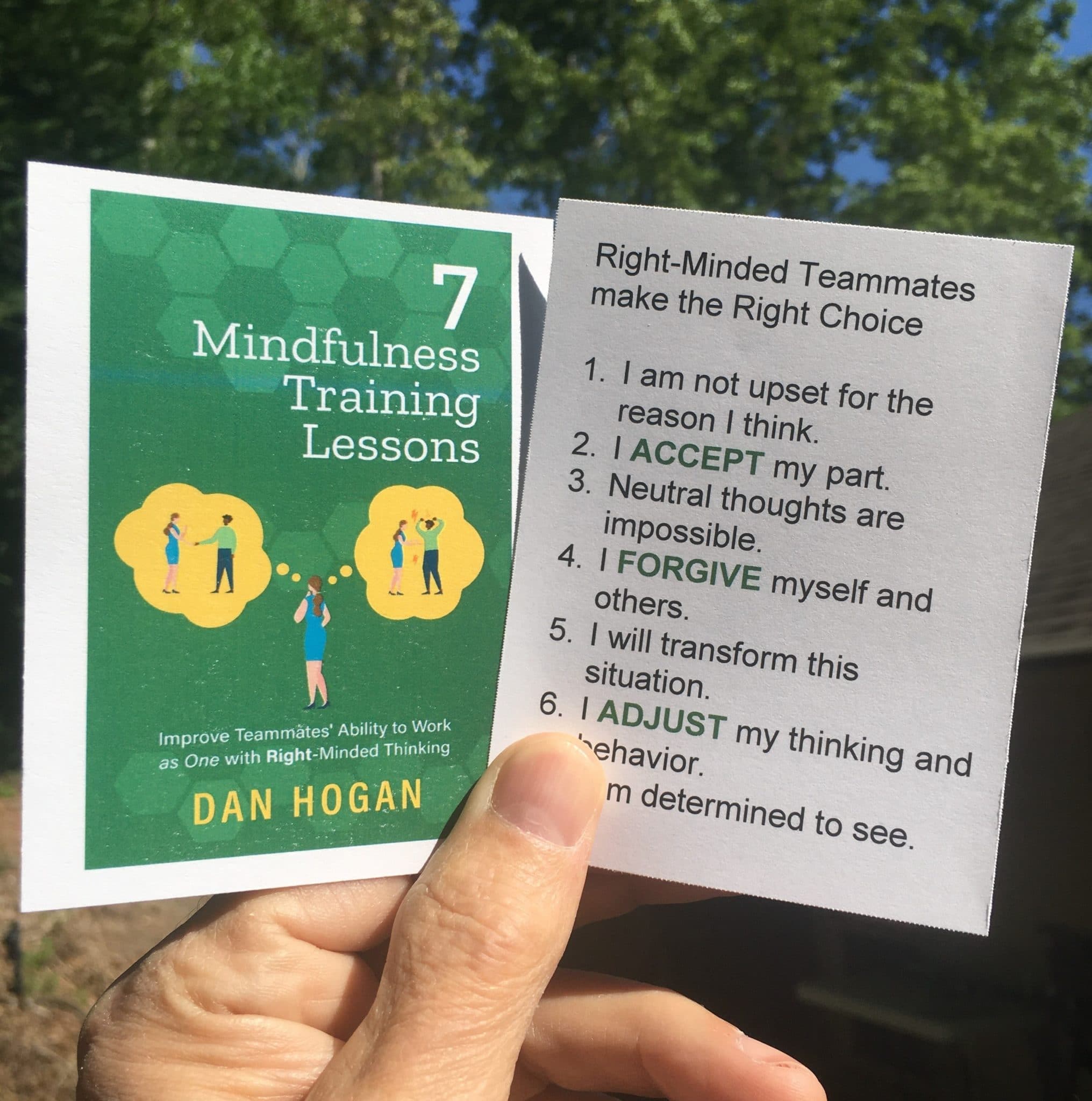
If you are taking the team study approach, be sure to distribute the 7 Lessons cards and posters to all teammates ahead of time. (These reusable resources are included in your package purchase here ONLY at rightmindedteamwork.com).
Regardless of which implementation approach you choose, the 7 Mindfulness Lessons will help you achieve a positive team mindset by guiding teammates to raise their awareness of their thoughts, choices, and behaviors. When teammates follow these Lessons, they Do No Harm while working together as one.
A Real-World Testimonial for the 7 Mindfulness Lessons
For over thirty-five years, I used tools like the 7 Mindfulness Lessons with hundreds of teams, and every time, they proved themselves effective. While working on this book series, I received a note from an RMT student who had actively applied the 7 Lessons to transform a challenging situation. She shared:
“Recently, I was reflecting on a challenging interpersonal situation, and the first of the 7 Mindfulness Lessons popped into my mind. ‘I am not upset about this difficult team situation for the reason I think,’ I told myself. Immediately, I saw there was much more to the situation than the surface-level issue. I figured I might as well apply the next few Lessons, too, and as I did, I felt myself relaxing. In just a few moments, I was able to see the situation completely differently.
“My inner resistance dissipated, and now the issue has, too. I had no doubt your methodology was effective, but I didn’t realize how immediately transformative it could be. Thank you and RMT for this breakthrough!”
No matter what teamwork challenges you’re facing, Right-Minded Teamwork truly has the power to turn your team around.
Get Started
Download materials and get started today!
May OnenessOneness is a psychological state of mind. It can be described in many ways using phrases such do no harm, and work as one. Separateness is its opposite. More be With You & Your Teammates 🙏

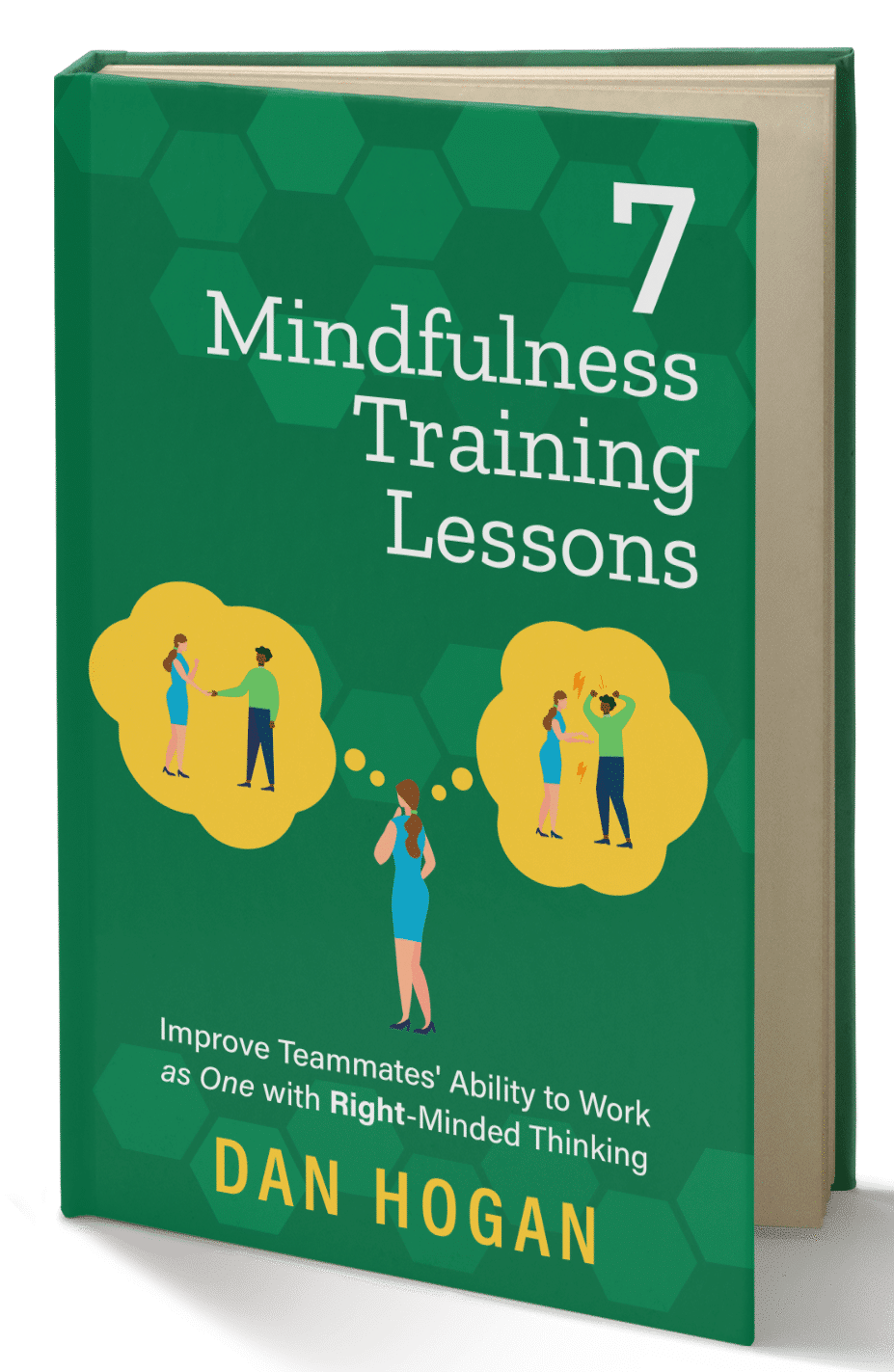
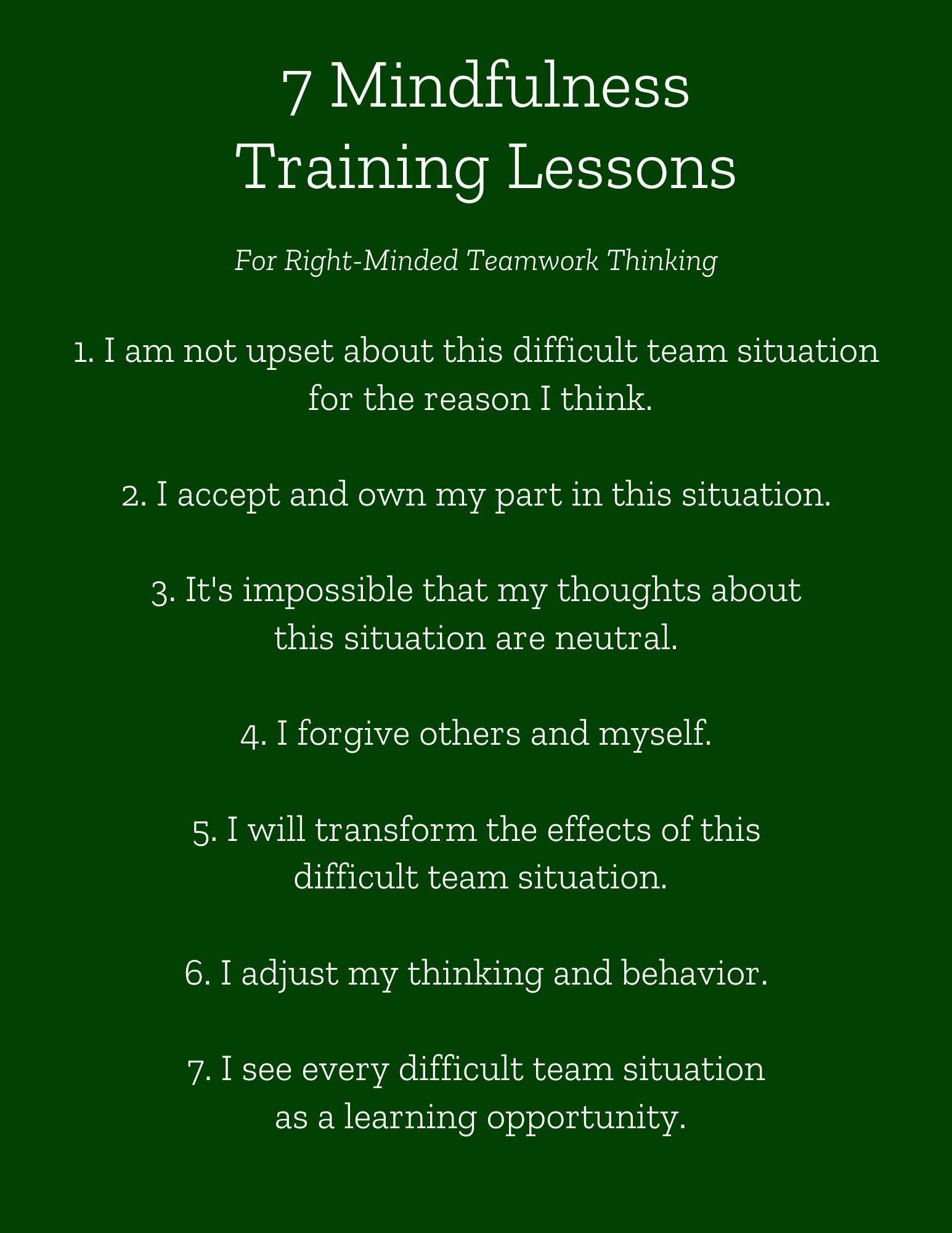
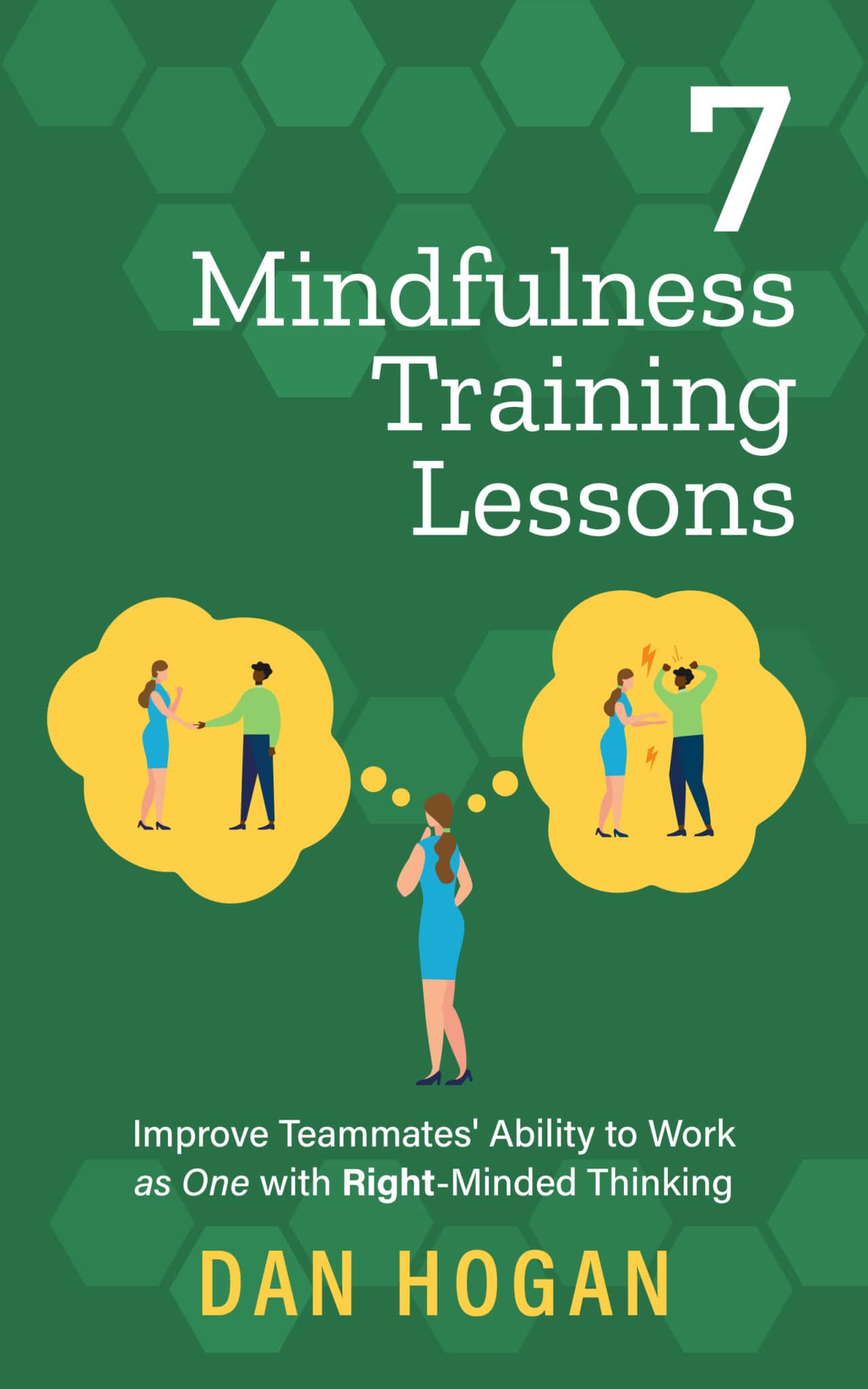








Dan Hogan –
Recently, I was reflecting on a challenging interpersonal situation, and the first of the 7 Mindfulness Lessons popped into my mind. ‘I am not upset about this difficult team situation for the reason I think,’ I told myself. Immediately, I saw there was much more to the situation than the surface-level issue. I figured I might as well apply the next few Lessons, too, and as I did, I felt myself relaxing. In just a few moments, I was able to see the situation completely differently. My inner resistance dissipated, and now the issue has, too. I had no doubt your methodology was effective, but I didn’t realize how immediately transformative it could be. Thank you and RMT for this breakthrough! Erin